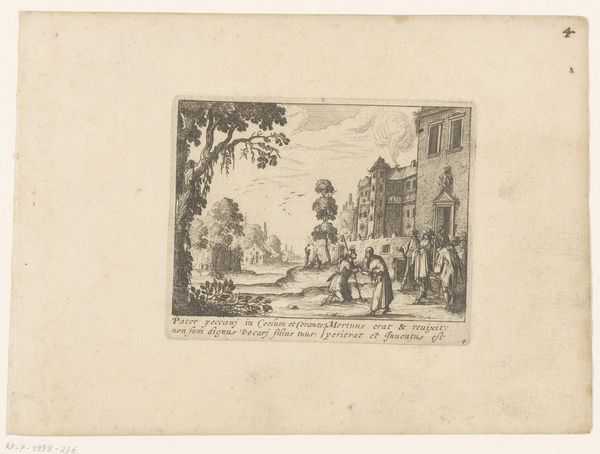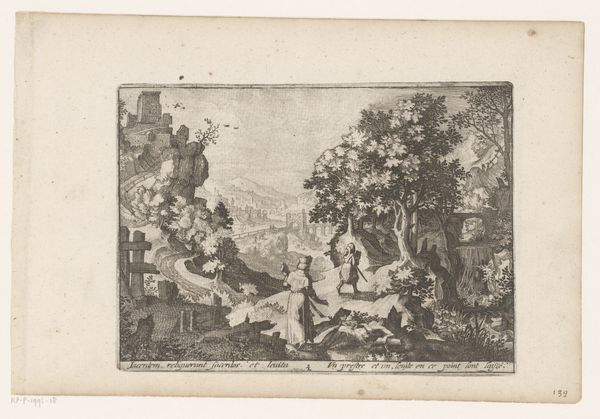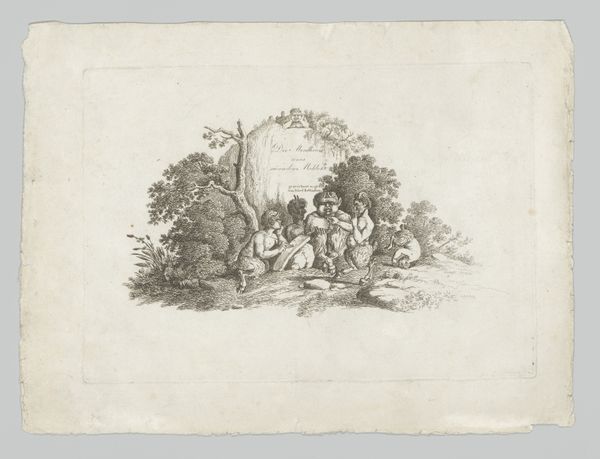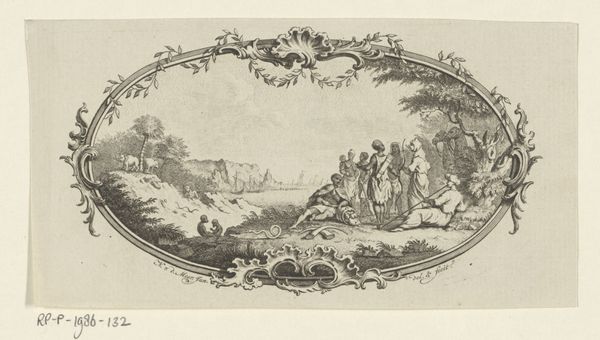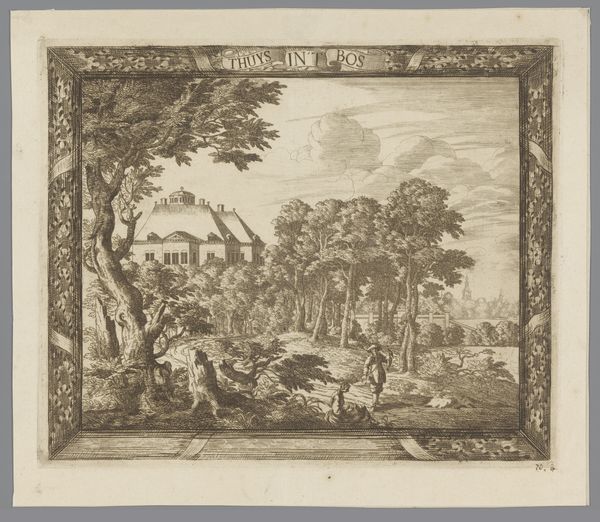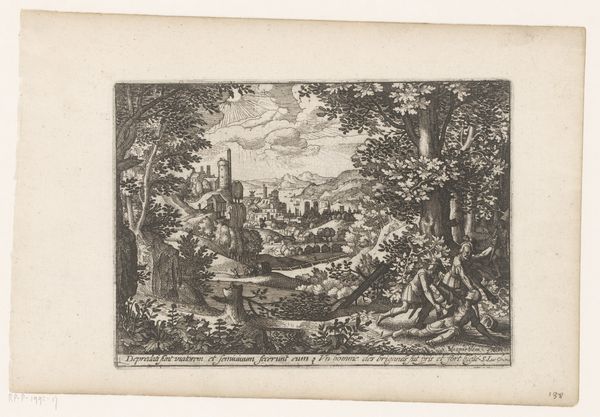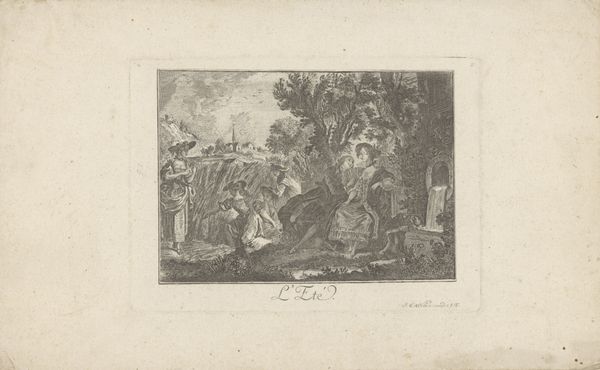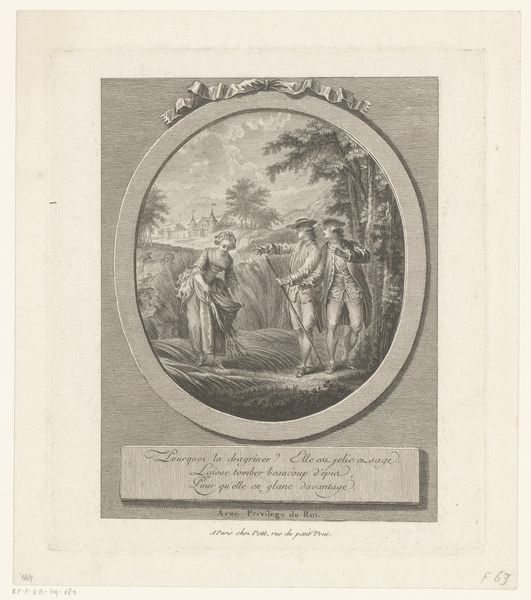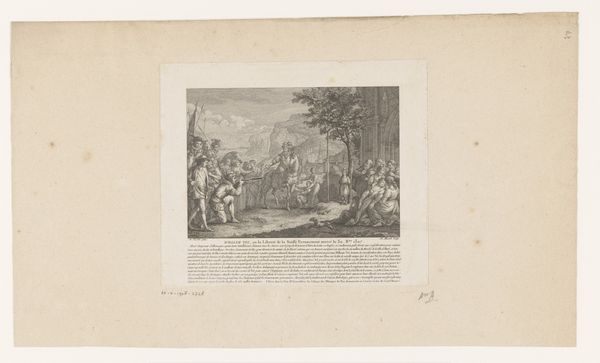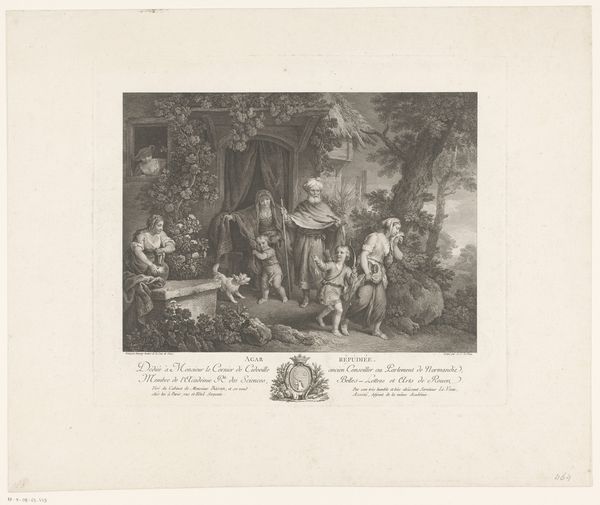
print, etching, engraving
#
baroque
# print
#
etching
#
old engraving style
#
landscape
#
history-painting
#
engraving
Dimensions: height 77 mm, width 96 mm
Copyright: Rijks Museum: Open Domain
Curator: The etching you are looking at is titled "Zoon neemt afscheid van zijn vader", created between 1620 and 1686 and held here at the Rijksmuseum. The piece is attributed to Nicolas Cochin. Editor: The entire scene is awash in delicate, repetitive strokes that generate this almost ethereal atmosphere. There's an intriguing dichotomy created between the rigidity of the architectural elements on the left, compared to the sprawling wilderness depicted across the rest of the piece. Curator: It's crucial to consider the process involved. Cochin, with meticulous labor, uses line work to create volume and depth. The interplay of the printed black ink on the paper substrate constructs a pictorial narrative. What social dynamics are conveyed through this image? Editor: Indeed. It suggests something of wealth and status, especially as revealed through the skilled use of perspective. The buildings are finely drawn with a palpable grandeur, highlighting the social and economic inequalities of the time. It seems those on horseback prepare for an important voyage. Curator: The composition follows a certain structural logic. The narrative is divided into stages using precise delineation—the parting scene foremost, followed by the procession moving into an abstracted middle-ground and framed by a somewhat allegorical landscape that provides its context. Editor: And to return to material considerations: think about the engraver’s labor in making these lines, replicating scenes which carry all sorts of implicit social messaging. Was this work intended to reinforce an existing hierarchy, or simply capture an essential lived experience? Curator: An astute observation. In that period, etchings served dual roles. Disseminated through printed copies, such imagery reached beyond aristocratic circles, becoming available for wider bourgeois consumption and interpretation, thus blurring previous symbolic boundaries. Editor: So, it is finally the materiality of this etching—a product of skill, access and labor that is integral to unpacking what the art itself aims to convey. I find that the key. Curator: Precisely. Thinking critically about the composition and historical printing production allows us to better reflect on not just the aesthetic but the total dynamic in play.
Comments
No comments
Be the first to comment and join the conversation on the ultimate creative platform.
